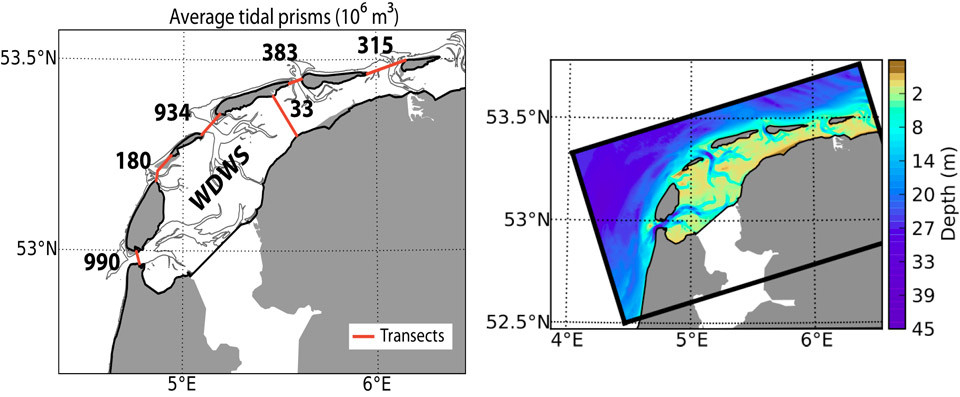PACE
The future of the Wadden Sea sediment fluxes: still keeping pace with sea level rise?
The principal goal of the bilateral ZKO/NWO/BMBF-funded PACE-project is to model the transport of suspended sediment in the Wadden Sea in order to find out whether the net sediment flux into the Wadden Sea is enough to keep up with local sea level rise.

The hydrodynamics of the Wadden Sea
For this, a first step is to accurately model the hydrodynamics of the Wadden Sea, i.e. the currents, freshwater fluxes, temperature and salinity fields and sea-level variations by tides and wind set-up. This has been done by the post-doctoral researchers Matias Duran-Matute and Maximiliano Sassi at NIOZ, in collaboration with Deltares (NL) and IOW (Germany). These high-resolution, three-dimensional simulations have been carried out with GETM/GOTM. The domain is covered with a horizontal 200 m squared mesh with 30 layers in the vertical.
The simulations were set up using a realistic bathymetry and realistic forcing including atmospheric forcing (precipitation, evaporation, atmospheric temperature, wind, and solar radiation), freshwater discharge from a dozen sources (most importantly the sluices at the Afsluitdijk), and boundary conditions (sea-level height, temperature, and salinity) from a larger North-Sea model. These model runs were done for the years 2009-2011.

These model simulations provide unprecedented insight into (residual) currents, pathways of freshwater, exposure times of intertidal flats and transports across watersheds. Most notably, the large variability of these quantities, which is mainly due to wind variability, can now be charted and evaluated. Comparisons with available data sets demonstrate that the model is highly realistic.
The study on the transport of suspended sediment, its variability and sensitivity to model parameters, is presently underway.
The model output, in abridged form, is freely available. The data has already proven very useful in several ecological studies.